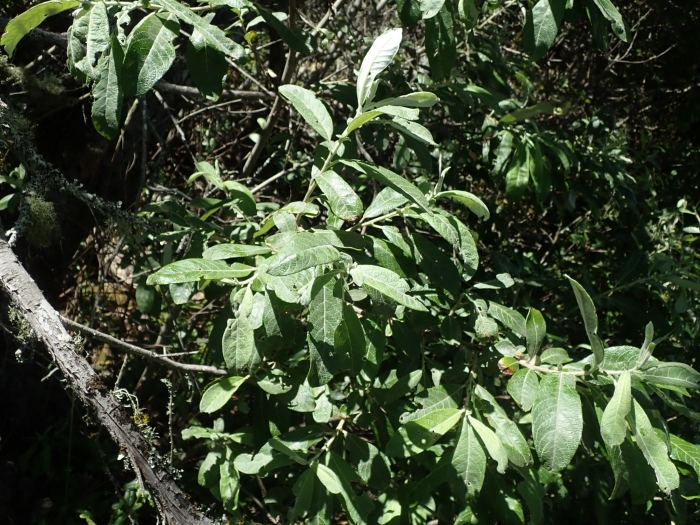Sitka Willow
(Salix sitchensis)
Sitka Willow (Salix sitchensis)
/
/

joergmlpts
CC BY 4.0
Image By:
joergmlpts
Recorded By:
Copyright:
CC BY 4.0
Copyright Notice:
Photo by: joergmlpts | License Type: CC BY 4.0 | License URL: http://creativecommons.org/licenses/by/4.0/ | Rights Holder: joergmlpts | Publisher: iNaturalist | Date Created: 2021-06-15T20:41:04Z |






























Estimated Native Range
Summary
Salix sitchensis, commonly known as Sitka Willow, is a deciduous shrub or small tree native to riparian zones, wetlands, and moist forest clearings of Western North America, from Alaska to California. It can grow as a multi-stemmed shrub or as an erect tree, typically reaching up to 8 meters (26 feet) in height. The leaves of Sitka Willow are lance-shaped or oval with pointed tips, measuring up to 12 cm in length, with smooth or slightly toothed margins that often curl under. The foliage is dark green and glossy on top, with hairy to woolly textures on the underside. The plant produces catkins, which are cylindrical flower clusters; male catkins are up to 6 cm long, while female catkins can exceed 10 cm as the fruits develop. The flowers bloom in early spring, around March in California, and are not particularly showy.
Sitka Willow is valued for its ability to stabilize soil and provide habitat for wildlife. It is often used in restoration projects, especially in riparian areas. This species is also suitable for creating natural screens or hedges in wet areas of the landscape. It requires full sun to part shade and medium amounts of water, thriving in soils with medium to fast drainage. While it is adaptable to various soil types, it prefers consistently moist conditions. Gardeners should be aware that Sitka Willow can spread aggressively by root suckers, potentially becoming invasive in some areas. It is also susceptible to various willow pests and diseases, such as willow scab and borers.CC BY-SA 4.0
Sitka Willow is valued for its ability to stabilize soil and provide habitat for wildlife. It is often used in restoration projects, especially in riparian areas. This species is also suitable for creating natural screens or hedges in wet areas of the landscape. It requires full sun to part shade and medium amounts of water, thriving in soils with medium to fast drainage. While it is adaptable to various soil types, it prefers consistently moist conditions. Gardeners should be aware that Sitka Willow can spread aggressively by root suckers, potentially becoming invasive in some areas. It is also susceptible to various willow pests and diseases, such as willow scab and borers.CC BY-SA 4.0
Plant Description
- Plant Type: Shrub, Tree
- Height: 3-25 feet
- Width: 3-25 feet
- Growth Rate: Moderate
- Flower Color: N/A
- Flowering Season: Spring
- Leaf Retention: Deciduous
Growth Requirements
- Sun: Full Sun, Part Shade
- Water: Medium
- Drainage: Fast, Medium
Common Uses
Bee Garden, Bird Garden, Butterfly Garden, Deer Resistant, Erosion Control, Low Maintenance, Water Garden
Natural Habitat
Native to riparian zones, wetlands, and moist forest clearings in Western North America
Other Names
Common Names: Velvet Willow , Coulter’s Willow , Saule De Sitka
Scientific Names: Salix sitchensis , Salix coulteri , Salix sitchensis var. sitchensis , Salix sitchensis var. denudata , Salix cuneata , Salix sitchensis f. coulteri , Salix sitchensis var. congesta , Salix sitchensis var. coulteri , Salix ajanensis , Salix coulteri f. parvifolia
GBIF Accepted Name: Salix sitchensis Sanson ex Bong.